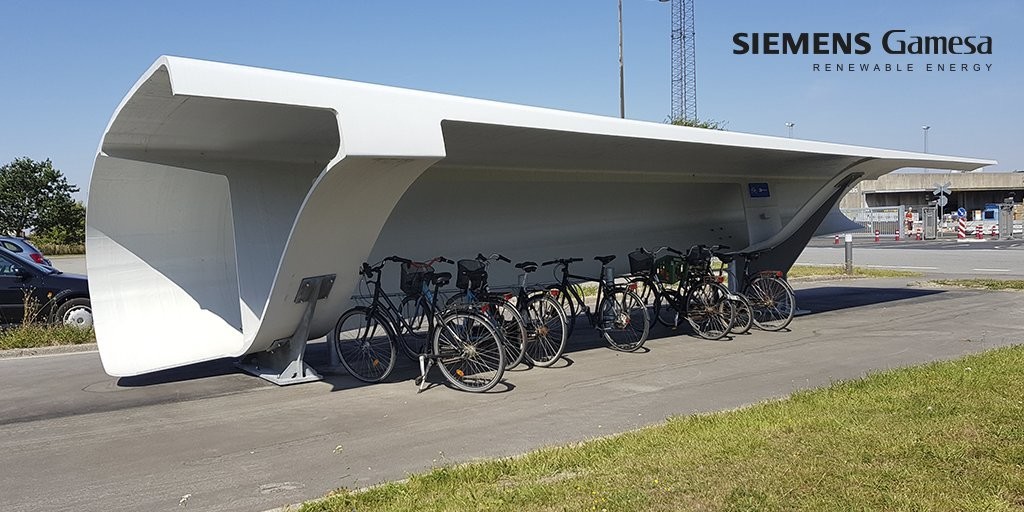There is an unfortunate photo of early wind turbine blades being buried that anti-green energy fanatics like to point at and say “see, that’s terrible for the environment!”. But when an excess of any kind of waste starts to build, creative humans find a use for it.
If you think about it, an inert fiberglass wind turbine blade is rather harmless compared to all of the toxic oil that ends up in the ground, our water and in the air we breathe.
Still to be 100% substantiable, every industry is looking to reduce and reuse the materials they use – the wind power industry is no exception and with more wind power coming online every day, the need for recycling solution grows.
Are the blades disposed of or reused?
Fibreglass is not totally recyclable. It’s non-biodegradable and made up of a composite of very fine strands of plastic and glass, which is extremely difficult to process at the point of recycling. Instead, it’s usually discarded as waste at landfills or incinerated.
However, while most first-generation commercial blades are being treated as waste, not all of them are destined for landfill. There are several innovative ways their raw materials are recycled to be used in other building materials or repurposed entirely in new structures.
Engineers and scientists have found a way to turn fibreglass into a key component used in the production of cement – an important material used in everyday construction. They are also finding ways to repurpose turbine blades as structural elements in their entirety – these include bike sheds in Denmark, noise barriers for highways in the US, ‘glamping pods’ across festival sites in Europe, or as parts of civil engineering projects, such as pedestrian footbridges, in Ireland.3
Could wind turbines become 100% sustainable?
For wind turbines to be considered totally sustainable they must be built from 100% recyclable products. That’s why engineers across the world are now focusing efforts on designs that use materials such as thermoplastics that are biodegradable, or that can be reconstituted at the end of their lives.1 and 4
Needless to say, even in their current form, the positive environmental impact of wind turbines far outweighs the negative, in terms of the critical role they play in reaching a net zero future.
Recycling Wind Turbines into cement
At a squat industrial facility in Louisiana, Missouri, a series of shredders operated by Veolia North America (VNA) grind 20-foot sections of turbine blades into a pulp. About two-thirds of the mixture is used to replace the sand and clay that goes into cement. The remaining volume is burned to heat the cement kilns, replacing coal.
Better Blades Through Better Chemistry
Siemens Gamesa has developed an alternative approach that involves changing how turbine blades are constructed to make it easier to retrieve and reuse fibers later on.
To start, the turbine maker reconfigured the chemical structure that binds the plastic resins to the glass or carbon fibers.
Repurposed Wind Mill Blades
- Top photo shows a section of turbine blade which shelters bikes in Denmark. Image: Siemens Gamesa via Twitter
- Photo below shows a playground made from discarded wind turbine blades.
- University College, Cork has come up with a plan to use some of them to build a bridge on a greenway – a 22km path and cycleway on the track of an old railway line.
- UK meanwhile, retired blades are being used in place of steel to reinforce concrete walls by contractors building the country’s new HS2 high speed rail line.
- Georgia Institute of Technology in the United States recently used a large section from a 100 metre blade as the roof of a small conventionally built house
- Scientists have tested the properties of decommissioned blades for use as power line poles.
- Don Lilly, chief executive of Global Fiberglass Solutions in Bellevue, Washington. Mr Lilly has been transforming fibreglass composites into small pellets he calls EcoPoly. The pellets can then be turned into injectable plastics, or highly waterproof boards that can be used in construction, he says.

